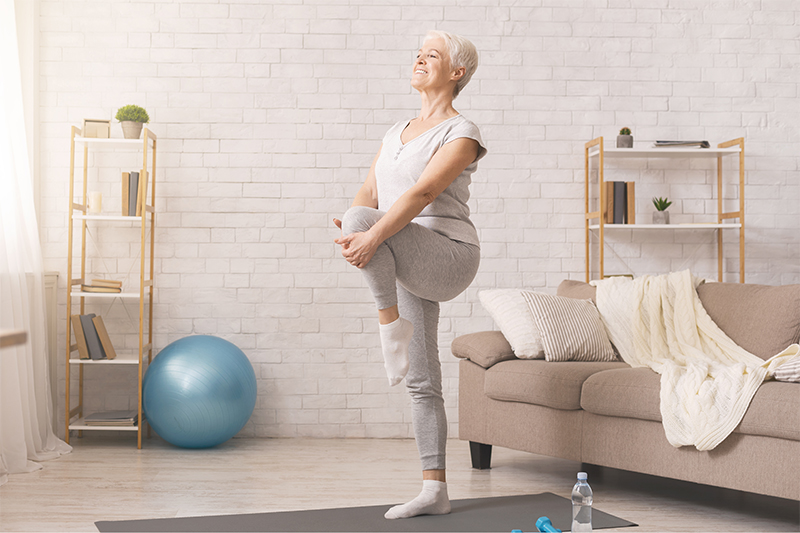Have you been feeling dizzy and unsteady? Afraid of falling or have issues with vertigo? When we don’t feel safe walking, going up and down stairs, or moving around in general, our world becomes very small very quickly. Our daily activities turn into impossible chores. Our social life may suffer because we have to give up activities—golf, tennis, pickleball, and so on—that we enjoy with our friends. We will withdraw, become isolated, and depression may set in. To live a full and healthy life, we need to have a properly functioning sense of balance.
Balance Is Our Most Essential Life-Sustaining Sense
A profound aspect of our well-being—our physical, mental, and emotional health—is based on having a well-functioning equilibrium, a fine-tuned sense of balance. Our balance system gives us our sense of orientation in space, so it needs to work efficiently in order to help us stay upright against gravity, constantly controlling our body in motion to prevent us from falling. We also need to have the ability to catch ourselves when we lose equilibrium. To manage this complex task, three systems must work efficiently on their own and also in sync with each other: the eyes—our visual system; our inner ears—our vestibular system; and our proprioception—the body’s “positioning” system. We also need good connection between the bottom of our feet and the ground.
To get a better understanding of how our eyes and balance are connected, try this (but be safe!): Stand on one leg with your eyes open. Now try to stand on one leg, this time with your eyes closed. How did you do? The same is true of the connection between our inner ears and our balance. Now try this (but again, be safe!): Stand on one leg with your eyes open. Then try standing on one leg with your eyes open and plug your ears. What happened this time?
If these tasks were difficult or even impossible, it is time to “upgrade” your balance system. Did you know that without a properly functioning balance system, we would not be able to keep our eyes on a moving target, object, or person. In addition, not having the ability to keep our eyes on a target while we are in motion can lead to easily losing balance and falling. A well-functioning balance system is crucial not only when playing sports but also for walking around safely in our fast and ever-changing environment. The good news is that we can reset and fine tune these systems by training them just like we train our muscles, our heart, and our lungs.
Static vs. Dynamic Balance
Measuring balance by how long we can stay on one leg is misleading. Sure, it’s important to be able to stand on one leg while donning a pair of socks or slacks. However, even if you can stand on one leg for minutes, that static balance does not “convert” to dynamic balance. Having great static balance might even give us a false sense of safety. True safety and freedom of movement is only achieved by having the ability to catch ourselves when we lose equilibrium while in motion. Life requires excellent dynamic balancing abilities to prevent falling. Moving different body parts smoothly, efficiently, and under voluntary control requires good visual, vestibular, and proprioceptive abilities. These systems live in and are controlled by the brain, so training the brain is a must for better balance and fall prevention.
As complex as all this may sound, do not get discouraged. There are many exercises you can all start implementing daily and get a jump start to regaining any lost sense of balance. Here are two little-known tips to help make your balance better—keep an open mind and give them a try.
Tips to Improve Your Balance
- Stand on one leg and take note of how well you do. Then put your foot down and find the four corners of your feet:
- under the big toe mound
- under the pinky toe mound
- under the inner heel
- under the outer heel
Press all four corners down into the ground for about five seconds while “suctioning” the middle arch of the foot away from the floor. Retest your balance on the same leg. If you do this drill well, your balance will improve immediately. For greatest success and improvement, this exercise must be performed several times a day.
- Stand on one leg and take note of how well you do. Then put your foot down and press your tongue against the roof of your mouth. While holding your tongue against the roof of your mouth, try to stand on the same leg as you did earlier. Notice how much steadier you are. Positioning the tongue has a profound effect on midline stability and on the core muscles. For improved balance, practice keeping your tongue connected to the roof of your mouth.
Remember, balance is a skill. Train it and improve it to help ensure you don’t lose it.
Ildi has recently moved to Naples from Boston, bringing 20 years of experience helping people with a variety of health issues. She specializes in injury rehabilitation and injury prevention, chronic pain management, movement therapy, and fitness and wellness coaching. She employs a brain-based approach that brings faster, more effective, and longer-lasting results than many traditional approaches. She has successfully helped people with balance and dizziness issues, postural problems, chronic neck and back pain, and recurring injuries—including her own: she fully rehabilitated herself from an incident that left her with a broken neck.
For more info visit her website: https://neurocentrichealth.boston or call 617.678.0724 to book a consultation in person (Naples) or via Zoom (anywhere). For a full balance assessment and a personalized exercise program, email: ildikovarhelyi@me.com.
